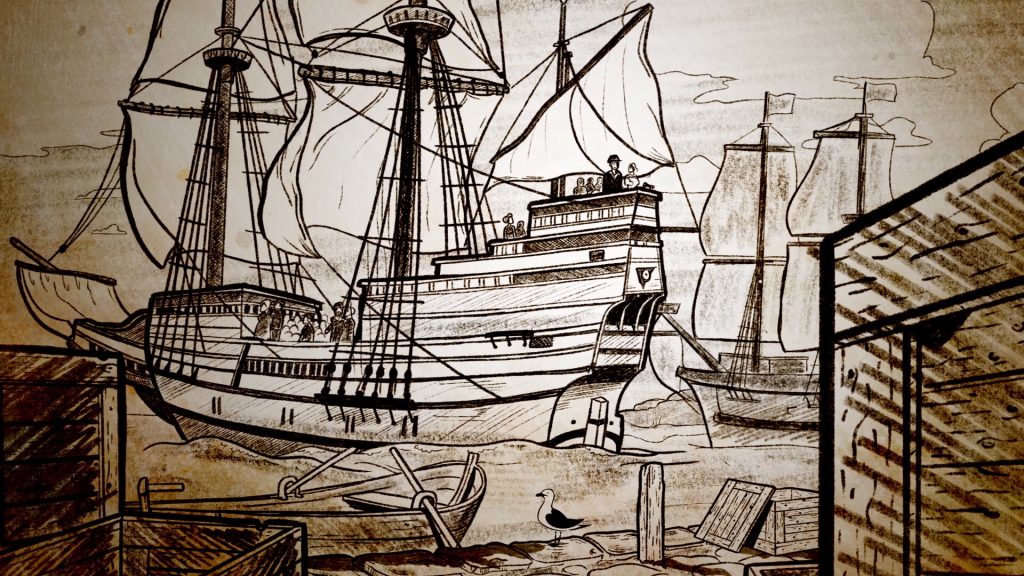A tale of two ships: the Speedwell and the Mayflower

A tale of two ships: the Speedwell and the Mayflower
In the summer of 1620, the Separatists in Holland had decided which of them would sail first to America. They boarded the ship they had bought, the Speedwell, ready to join another ship hired in England, the Mayflower.
Bradford, their chronicler and later colony Governor, picks up the story as they depart from Holland:
“Thus hoisting sail, with a prosperous wind they came in short time to Southampton, where they found the bigger ship come from London, lying ready, with all the rest of their company. After a joyful welcome, and mutual congratulations, with other friendly entertainments, they fell to parley about their business…”
They had agreed terms with their sponsors in the Virginia Company, although negotiations continued as to what they would owe them for the voyage. Bradford describes how they were “forced to sell off some of their provisions to stop this gap, which was some 3 or 4 score firkins of butter”, and all this before they had even departed England; “they set sail from thence about the 5 of August”.
“Being thus put to sea they had not gone far, but Mr. Reynolds the master of the lesser ship complained that he found his ship so leaky as he dared not put further to sea till she was mended. So the master of the bigger ship (called Mr. Jones) being consulted with, they both resolved to put into Dartmouth … some leaks were found & mended, and now it was conceived … they might proceed without either fear or danger.
So with good hopes … they put to sea again, conceiving they should go comfortably on … after they were gone to sea again above 100 leagues [beyond] Lands End, … the master of the small ship complained his ship was so leaky [that they would] sink at sea, … [they] resolved both ships [should go] back again & put into Plimoth, which accordingly was done.
But no special leak could be found, but it was judged … and that she would not prove sufficient for the voyage. Upon which it was resolved to dismiss her & part of the company, and proceed with the other ship.”
Of those still intent on travel, they crowded onto the Mayflower:
“So after they had took out such provision as the other ship could well stow, and concluded both what number and what persons to send back, they made another sad parting, the one ship going back for London, and the other was to proceed on her voyage.
Those that went back were [mostly] willing so to do, either out of some discontent, or fear … of the ill success of the voyage … but others, [because] of their own weakness, and charge of many young children, were thought least useful, and most unfit to bear the brunt of this hard adventure.”
Bradford remained sceptical about the true nature of the Speedwell’s problem, recounting later that:
“It was found that the leakiness of this ship was partly [because it was] over-masted, and [with] too much … sails; for after she was sold … she made many voyages & performed her service very sufficiently, to the great profit of her owners. But more especially, by the cunning & deceit of the master & his company, who were hired to stay a whole year in [America], and now [disliking the idea] & fearing [lack] of victuals [food], they plotted this stratagem to free themselves; as afterwards was known, & by some of them confessed.”
Next week: Departure – the Pilgrims leave England for the last time…